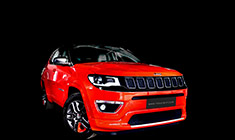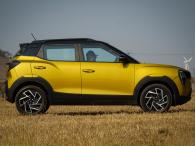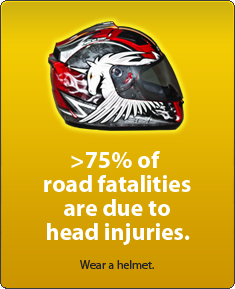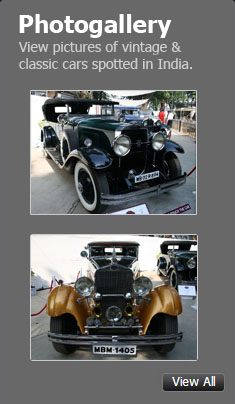News
2024 Jeep Wrangler Rubicon : Our observations after a day of driving
Right off the bat, this engine seems like a perfect fit for Indian driving conditions. It strikes a good balance between on-road and off-road driving.
Driving the Jeep Wrangler Rubicon
This generation of the Wrangler (JL) is available only with a 2.0-litre petrol engine in India that is shared with the Grand Cherokee, albeit in a different state of tune. Internationally of course there are multiple powertrains including a V6 petrol, a 4-cylinder diesel, a plug-in hybrid and even an all-electric Wrangler. There’s also a 6.4-litre hemi-V8 powered Wrangler that has a claimed 0-100 km/h time of 4.5 seconds. As of now, we have to make do with the 2.0-litre engine that makes 268 BHP @ 5,250 rpm and 400 Nm @ 3,000 rpm. Right off the bat, this engine seems like a perfect fit for Indian driving conditions. It strikes a good balance between on-road and off-road driving. We got to drive the Rubicon primarily off-road and also on regular roads for some time. Let’s start with the on-road driving part first and we’ll move on to the off-roading part after that, so keep reading.
Start the engine and you will notice that the cabin is quieter than the pre-facelift car thanks to the improvements in the NVH package. Release the brake pedal and the Wrangler moves off the line smoothly. The power delivery is smooth and the Wrangler isn’t in a hurry to get a move on. With a light foot on the accelerator, the car crawls in a relaxed manner. The throttle inputs are smooth and unlike the Grand Cherokee which feels a bit eager, the Wrangler treads carefully. Driving smoothly at city speeds shouldn’t be an issue. The turbo kicks in linearly and you get a strong surge of power which should take care of the quick overtakes in the city.
Out on the highway, the Wrangler manages to get by. The strong mid-range means that you will reach highway speeds with ease. We were in the rural areas of Punjab, so we couldn’t push the car above 100 km/h. At high revs, the engine sounded strained and not something you’d like to hear. On kickdown, the gearbox is responsive and drops gears instantly to give you a strong surge of power. The claimed 0-100 km/h acceleration time is 8.1 seconds.
The 8-speed automatic gearbox is one of the nicer units. The shifts are smooth while driving on the road and also off the road.
Noise, Vibration & Harshness (NVH)
The MY2024 Wrangler comes with a noise-reduction cabin package. This includes acoustic laminated front door glass and acoustic front seat carpet area. The dashboard also gets PUR wrap which claims to reduce 50 decibels. Has all of this made a difference in cabin NVH? Yes, it has. In comparison with the pre-facelift Wrangler, the cabin is noticeably quieter. The engine is loud on the outside, especially when in 4L, but a lot of that noise is eliminated in the cabin. The mud tyres on the Rubicon variant make a lot of noise at high speeds.
Mileage & Fuel economy
If fuel economy is a priority, then this lifestyle off-road turbo-petrol car may not be for you. Jeep claims that the Wrangler Unlimited has a fuel economy of 11.4 km/l while the Rubicon variant has a fuel economy of 10.6 km/l. The car is equipped with auto start-stop technology to improve fuel economy.
2.0-litre 4-cylinder turbo-petrol engine makes 268 BHP @ 5,250 rpm and 400 Nm @ 3,000 rpm. It’s mated to an 8-speed automatic transmission:
![]()
Suspension
![]()
Ride Comfort
The Jeep Wrangler is a body-on-frame off-road SUV that doesn’t get an independent suspension setup like most SUVs today. It remains one of the last SUVs to have rigid axles at the front and rear. These are some of the key reasons why the Wrangler is so good at off-roading. Of course, there’s a compromise to having rigid axles, which is seen in the on-road driving dynamics of the Wrangler. The ride is not as comfortable as your usual on-road cars. The suspension system transfers most of the bumps and potholes on the road inside the cabin and it can get a little bumpy. On the flip side, the suspension is extremely abuse-friendly. You can go through any pothole without ever worrying about it damaging your car.
Handling & Dynamics
As you gain speed, the ride gets slightly better, but it’s not exactly planted. We could go only up to 100 km/h on the rural roads and the car stayed fairly stable for a big off-road SUV. There was vertical movement at speeds and we’d suggest staying under the 100 km/h mark especially due to the mud terrain tyres on the Rubicon variant.
Twisty roads are also best taken at safe speeds as the Wrangler is no corner carver. There’s plenty of body roll and you’ll notice the traction control kicking in to cut the power. There’s not enough grip from the mud terrain tyres on the road as well.
Steering
The Wrangler is equipped with an electro-hydraulic power steering (EHPS). The steering weight is light at slow speeds and weighs up as you build up speed. The turning radius isn’t tight and you will end up taking 3-point turns at places. It doesn’t feel very connected, but that’s something we see quite often with off-road cars.
The Wrangler comes with a steering stabilizer which is essentially a small shock absorber on the steering linkage. It helps stabilize the unwanted side-to-side motion of the front tyres up through the steering system:
![]()
Braking
You get all-wheel disc brakes on the Wrangler. We drove the Rubicon variant which was equipped with mud terrain tyres and the braking performance on the road wasn’t great. If your driving primarily involves on-road driving, do consider the Unlimited variant which gets highway terrain tyres. Braking off the road was much better. The brake pedal feel was progressive, but not too sharp.










.png)







